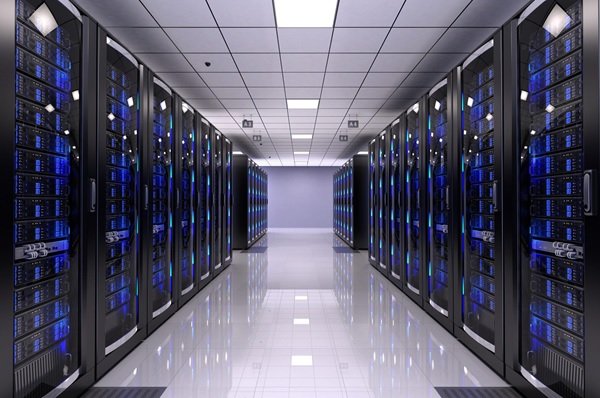Anatomy of a Server: Key Components Powering Your Infrastructure
Servers are one Of The Main Hardware Components Of Computer Networks, forming the Backbone Of These Networks. Typically, Servers are used primarily To Build Client-Server Networks.
Like personal computers, servers are a set of hardware components, such as main memory, storage space, CPU, power supply, and other components, that facilitate users’ access to communication services. However, servers differ in appearance and processing power.
What is a server?
A server is a hardware or software-driven device that services applications and clients. It operates by receiving and responding to client requests.
Typically, in LANs, servers connect to switches or routers, providing organizations with essential capabilities. For example, organizations are allowed to host websites or implement email servers.
An important point that we need to mention in this section is the concept of virtual servers. A virtual server is a part of a physical server with the characteristics of a full-fledged server. More precisely, the operating system and virtual server applications are installed on the virtual server. To be more precise, a virtual server is a small part of a server that is the same as a building unit.
When you set up a dedicated virtual server, you can access all of the dedicated virtual server space. Another critical term in this field is dedicated server. A dedicated server is specifically designed to host a company, and access to that server is only available to the company that provided it. In this case, the dedicated server will not be shared with any other client.
Server configuration hardware equipment
Servers are robust processing systems used to provide various services. Although personal computers can theoretically be used as servers, they are not comparable to desktop computers due to their mighty processing power. In addition, servers have more hardware than networked computers, which we will discuss below.
Server motherboard
Like a personal computer, servers have a motherboard and other components installed on them. However, the server motherboard is different from the PC motherboard. For example, it has a larger chassis, which allows more main memory slots to be placed on it, and thus, the motherboard supports main memory.
In addition, server motherboards can support two physical processors, are equipped with two network cards, and support up to 1 terabyte of main memory.
For example, the DL380 G10 series HP server, one of the 10th-generation ProLiant servers, has a motherboard that supports two 12-core Intel Xeon Gold 5118 processors with a maximum frequency of 2.3 GHz. This server’s motherboard has 24 DIMM RAM slots and can support up to 1.5 terabytes of memory.
In addition, the DL380 G10 Prolet Server uses the S100i chip in the Smart Array section and can support up to 14 SATA hard drives. In addition, it has a p408-a Smart Array that sits directly on the server motherboard and features Support for 3 SAS hard drives. The motherboard of this server is equipped with 4fournetwork ports at a speed of 1 Gbps.
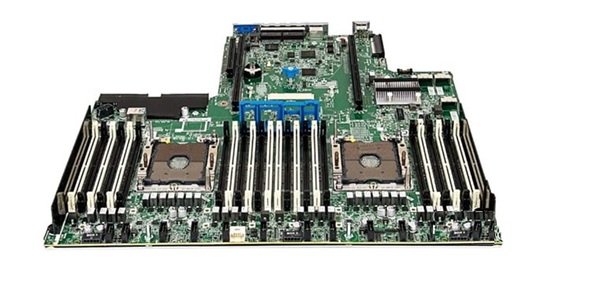
Server CPU
The central part of the server is the processor or CPUs on which it is installed. The CPU becomes essential when the server is to be used for virtualization. If the server uses weak processors, the access speed to the virtual machines will be reduced, or virtualization software such as ESXi and vCenter will not install on the server due to poor processing power.
When buying a server processor, the most important criteria should be the number of processing cores, Hyperthreading technology, amount of cache, data transfer rate between the processor and hardware components, amount and type of main memory, clock speed, and clock speed maximum heat, which produces Left (TDP), the type of socket that the processor supports, and so on.
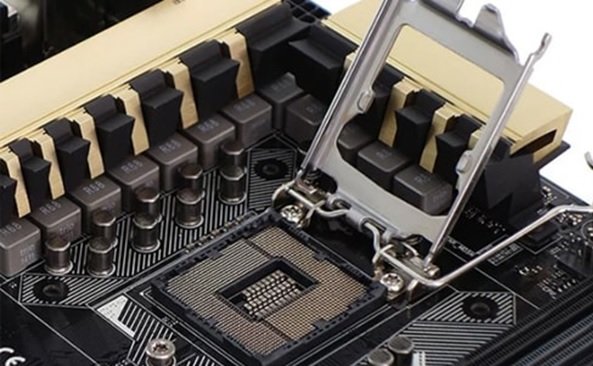
CPU cooling
The primary function of the heatsink is to dissipate the heat generated by the processor. The more workload is applied to the processor, the more heat it generates. If a suitable heatsink is not installed on the processor, too much heat will disrupt the system’s performance and, in critical cases, cause the server to shut down, which is not interesting. Therefore, you should choose the right option when buying a heatsink for a processor.
Server main memory
The server’s main memory is significantly different from that of PCs, and PC memory should not be used on servers. It is not harmful to know that the description of the parameters you must observe to choose the main memory alone consists of several articles of several thousand words.
However, the most important thing to consider when purchasing the server’s main memory is its Support for ECC technology, which detects errors. This technology allows the memory to detect and fix data transmission errors, a feature that personal computer RAMs do not have.
In addition, other technologies, such as Advanced Error Detection and Advanced Fault Resiliency, are critical criteria that must be considered when purchasing the server’s main memory. In general, the main memories of the server are classified as follows:
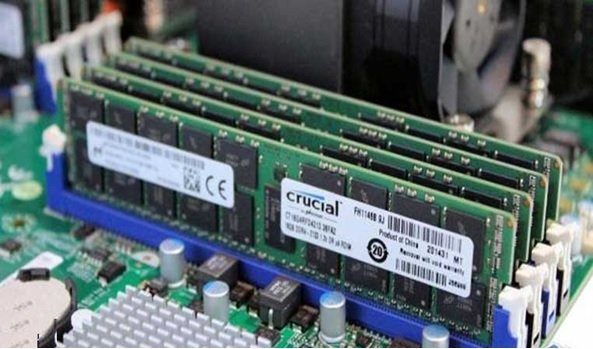
UDIMM:
Unbuffered memories that have low power consumption and also low capacity.
RDIMM:
Registered memory is a two-line system with stability between the DRAM module and the memory controller to increase memory reliability. This register buffers the control and address signals in the modules. These memories consume more power but ensure that the server is running smoothly. Therefore, they perform better than UDIMMs.
LRDIMM:
Load-reduced two-line memories that are unstable and have buffer resistance. They are denser than RDIMMs and use a buffer chip to reduce and minimize the workload on the memory bus. These memories are a good choice for data centers because of their performance.
Hard server
Hard disks are the main storage medium on servers, although solid-state drives (SSDs) will gradually replace hard disks. Equipped hard drives have a relatively shorter life than solid-state drives due to their mechanical process, but are less expensive and offer more storage capacity.
One thing to note about the server’s hard drive is the supported interface. The SAS and SATA interfaces on hard disks describe the speed and bandwidth that a hard disk provides.
Clothes drives provide faster access speeds than hard drives, and power consumption and latency are low. SDD drives are available in SFF 2.5 or 2.5-inch LFF.
In addition, 2.5-inch NVMe PCIe and M.2 SSD solid-state drives are also available. Today, solid-state drives are architecturally divided into MLC, SLS, TLC, and QLC groups.
RAID controller
The main task of the RAID controller on hard disks is to establish a connection between the hard disk, the CPU, and the operating system. The servers can support software and hardware reading.
The most important tasks of a RAID controller include monitoring input/output activity, monitoring key parameters, predicting system problems, term troubleshooting and automatic recovery, error management, and protecting hard drives from failure.
Read control is the processor, cache, and drive for the best performance in RAID. Another thing to note about the Reed Controller is that the Reed battery is present in servers such as the HP, and can cause power outages and information to be stored on the flash in the event of a power outage.
Network card
The network card connects the server to the network. Important components of a network card include the processor, main memory, EEPROM, and bus. The bandwidth provided by network cards is not the same. Of course, installing a network card can increase the server’s network ports.
For example, the Ethernet 1GB 4Port 634025-001 Ethernet server network card supports the PCI Express 2.0 interface and is equipped with 4xRJ45-Ethernet 10base-t / 100base-tx / 1000base-t ports. This network card uses a Broadcom BCM5719 processor and provides access to a transfer rate of 1 Gbps. In addition, it supports the SNMP remote management protocol. This network card is compatible with 8th-generation servers.
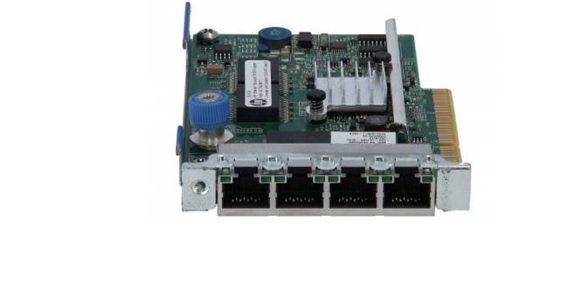
Host Pass (HBA) Card
Host Host Adapter (HBA) is an integrated board that manages the input and output processing and provides the physical interface between the server and the storage device under the network. The HBA significantly reduces the server CPU workload associated with data storage and retrieval, helping to improve server performance.
Typically, these cards are installed in the PCI Express slot. They have speeds in the range of 8 or 16 Gbps and are equipped with one or two ports.
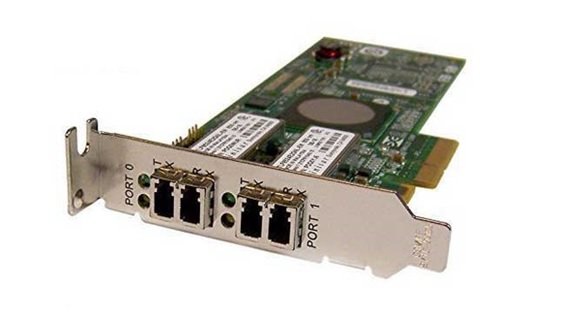
Power supply
According to the author, the power supply is the beating heart of any server. It provides the required power to all its components. Some server manufacturers install two or more power supplies on the server to achieve more redundancy. Of course, each power supply alone can supply the power the server requires. If one fails, the following power supply automatically enters the circuit, preventing the server from crashing.
In addition, the server power supply architecture allows for replacement without shutting down the server. Power supplies have a shorter lifespan because they withstand a lot of work pressure. The most important thing to consider when choosing a power supply is its efficiency. Typically, efficiency in the range of 92 to 96% is ideal.
Server cooling fan
Servers, like personal computers, are equipped with fans that dissipate heat inside the server. The better the fan’s heat dissipation performance inside the server chassis, the longer the life of the internal components.
FAQ
What are the essential hardware components of a server?
CPU, RAM, storage drives (HDD or SSD), network interface cards (NIC), power supply, motherboard, and cooling system.
Why is ECC memory important in servers?
ECC detects and corrects memory errors, improving stability and preventing crashes, especially in mission-critical setups.
What role does redundancy play in server design?
Redundant components (dual power supplies, RAID storage, backup cooling) help the server remain operational even if one part fails.
